Ambassador Douglas Silliman | ||
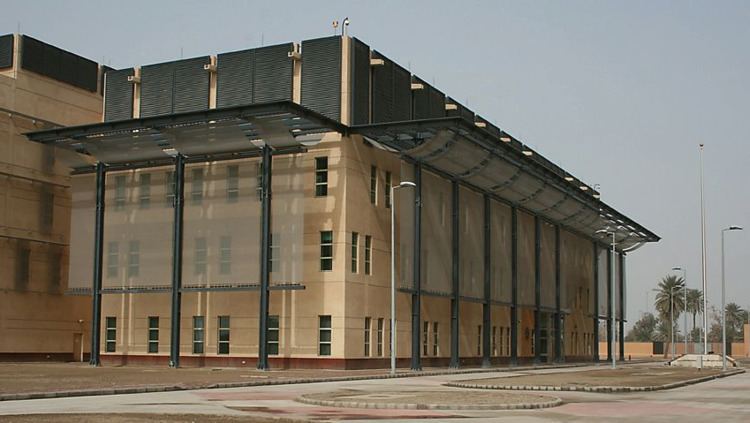 | ||
Opened May 2008; 8 years ago (2008-05) | ||
The Embassy of the United States of America in Baghdad is the diplomatic mission of United States of America in the Republic of Iraq. Ambassador Stuart E. Jones is currently the Chief of Mission.
Contents
At 104 acres (42 ha), it is the largest and most expensive embassy in the world, and is nearly as large as Vatican City. The embassy complex is about five times the size of the U.S. Embassy in Yerevan, which is the second largest U.S. diplomatic mission abroad, and over ten times the size of the U.S. Embassy in Beijing, which is the third largest U.S. diplomatic mission abroad.
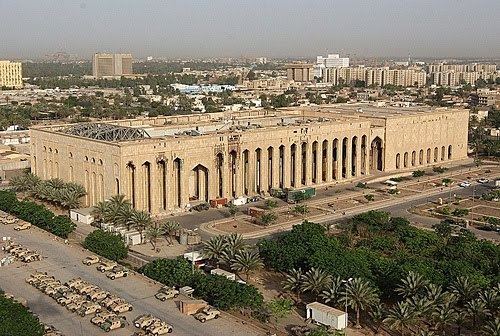
The Embassy opened in January 2009 following a series of construction delays. It replaced the previous embassy, which opened July 1, 2004 in Baghdad's Green Zone in a former Palace of Saddam Hussein. The embassy complex cost $750 million to build and reached a peak staffing of 16,000 employees and contractors in 2012.
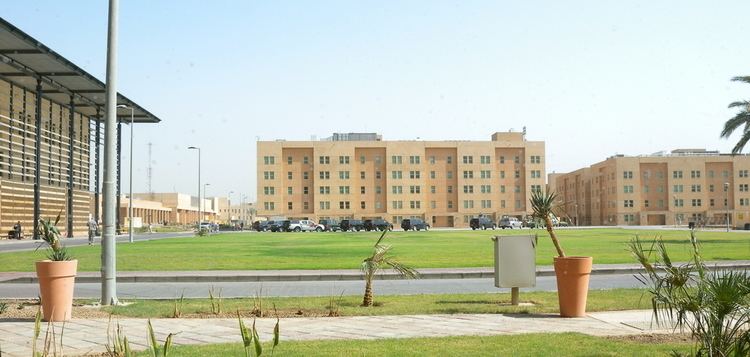
Old embassy
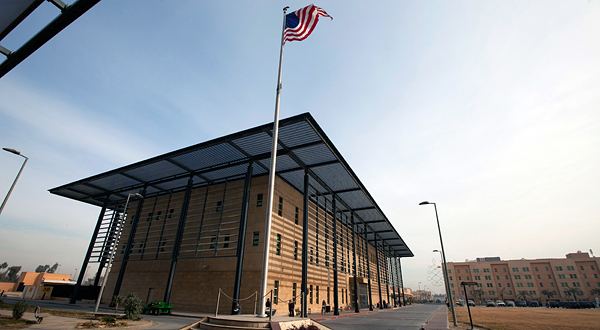
The United States established diplomatic relations with Iraq in 1930 and opened a legation in Baghdad. The legation was upgraded to an embassy in 1946. A new building was designed by Josep Lluís Sert in 1955 and completed in 1957, with its main priority on keeping the building cool rather than security. This building remained the embassy until the Six-Day War of 1967, when the Arab countries broke off diplomatic relations with the United States.
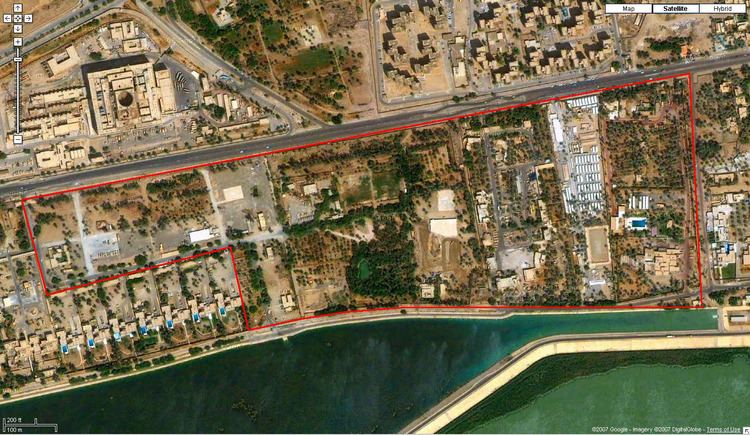
In 1972, the embassy became the U.S. Interests Section of the Belgian Embassy to Iraq, as Belgium was the protecting power for the United States in Iraq. The U.S. Interests Section was again upgraded to an embassy in 1984 after the resumption of U.S.-Iraqi diplomatic relations. The building lost its embassy status just before the Gulf War, which caused a second breach of diplomatic relations between the two countries. The U.S. Interests Section was then re-established with Poland as the protecting power.
Republican Palace
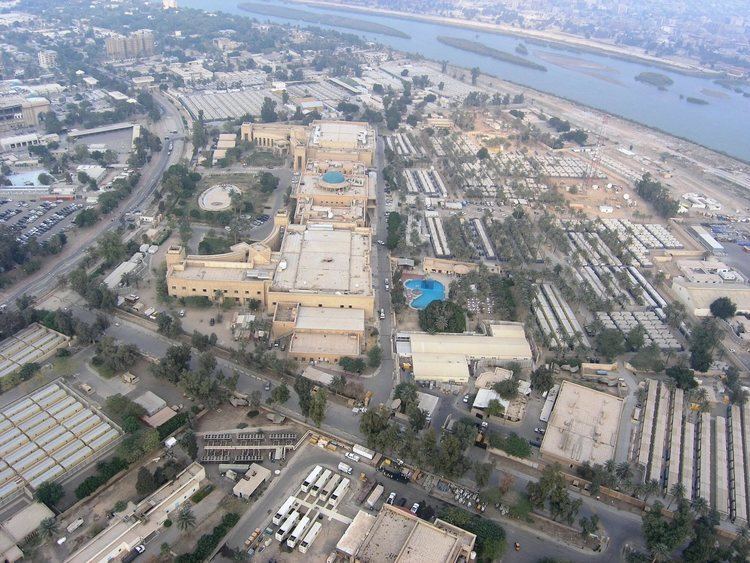
In 2003, the United States invaded Iraq and overthrew the government of Saddam Hussein. The U.S. then established diplomatic relations with the new Iraqi government. Because the old U.S. embassy was located outside of the Green Zone, it was deemed unsafe for American diplomats and remained deserted. A temporary embassy was established in the Republican Palace.
New embassy
A new embassy was constructed along the Tigris River, west of the Arbataash Tamuz Bridge, and facing Al-Kindi street to the north. The embassy is a permanent structure which has provided a new base for the 5,500 Americans currently living and working in Baghdad. During construction, the US government kept many aspects of the project under wraps, with many details released only in a U.S. Senate Foreign Relations Committee report. Apart from the 1,000 regular employees, up to 3,000 additional staff members have been hired, including security personnel.
With construction beginning in mid-2005, the original target completion date was September 2007. "A week after submitting his FY2006 budget to Congress, the President sent Congress an FY2005 emergency supplemental funding request. Included in the supplemental is more than $1.3 billion for the embassy in Iraq ..." An emergency supplemental appropriation (H.R. 1268/P.L. 109-13), which included $592 million for embassy construction, was signed into law on May 11, 2005. According to the Department of State, this funding was all that was needed for construction of the U.S. Embassy in Baghdad. However, Walter Pincus of the Washington Post found that the new embassy had cost more than $700 million by 2012, and Business Insider reported in 2013 that the cost of the embassy had surpassed $750 million. The Obama administration requested more than $100 million for a "massive" upgrade to the embassy compound in 2012. As of 2006, construction was being led by the Kuwaiti firm First Kuwaiti Trading & Contracting,
The embassy has extensive housing and infrastructure facilities in addition to the usual diplomatic buildings. The buildings include:
The complex is heavily fortified, even by the standards of the Green Zone. The details are largely secret, but it is likely to include a significant US Marine Security Guard detachment. Fortifications include deep security perimeters, buildings reinforced beyond the usual standard, and five highly guarded entrances.
On October 5, 2007, the Associated Press reported the initial target completion date of September would not be met, and that it was unlikely any buildings would be occupied until 2008. In May 2008, US diplomats began moving into the embassy.
Staff drawdown
The embassy formally opened over a year behind schedule in January 2009 with a staff of over 16,000 people, mostly contractors, but including 2,000 diplomats. In February 2012, weeks after the final departure of US Military forces from Iraq, the State Department announced that the staff would be greatly reduced because of budget concerns and a re-evaluation of diplomatic strategy in Iraq, in light of the military withdrawal.
Controversy
There have been allegations of unethical practices and human trafficking by First Kuwaiti General Trading and Contracting Company, a contractor engaged during the construction of the new embassy.
